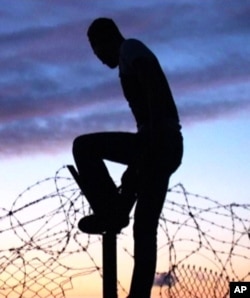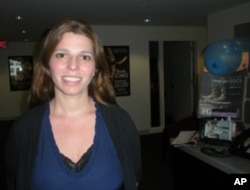The Silverdocs film festival is widely regarded as one of the most important film festivals in the country. Each year, the festival offers independently-produced non-fiction films from around the world, attracting filmmakers and moviegoers alike. The festival is presented by the American Film Institute, and is sponsored by the Discovery Channel.
This year, the festival showcased 102 films, representing the work of artists from 54 countries. It also featured a special "Peacebuilding on Screen" program: a series of films selected in collaboration with the United States Institute of Peace, a congressionally-funded, independent institution that promotes the non-violent resolution of conflicts around the world. The six films featured at Silverdocs all had non-violent struggle and peaceful resolution as their central theme.
Israel and the Palestinian Territories
In the film Budrus, award-winning filmmaker Julia Bacha follows Ayed Morrar, a Palestinian villager turned community organizer, as he leads fellow residents of Budrus in peaceful protests to save their village from destruction by Israel's Separation Barrier. The controversial network of fences and 8-meter-tall concrete walls is being built by the state of Israel to secure hundreds of kilometers of its border with the Palestinian West Bank.
The non-violent demonstrations against the Barrier gain traction as women villagers, local Fatah and Hamas members and Israeli peace activists join in the struggle.
"Combining tactics borrowed from the first intifada in the 1980s with the active participation of Israeli and international activists, this movement, though still fragile, carries great potential for the region," said filmmaker Julia Bacha in a statement on the film's website.
In My so-Called Enemy, filmmaker Lisa Gossels follows six girls from Israel and the Palestinian Territories during a week at a peacebuilding camp in the United States. The camera then follows the girls over the next six years, bearing witness to the long-term impact the camp experience has had on their lives at home.
Africa
War Don Don deals with the aftermath of the devastating civil war in Sierra Leone that erupted in 1991 and lasted eleven years. The film, who's title means "the war is over," follows the trial of Issa Sessay, a former rebel leader accused of crimes against humanity, as an international court seeks to bring him to justice.
In a statement on the film's website, award-winning director/producer Rebecca Richman Cohen said she was "fascinated by the range of roles that one man could assume amidst the intensity of such a brutal conflict."
In another film from Africa, Grace, Millie, Lucy...Child Soldiers filmmaker Raymonde Provencher tackles the plight of girl soldiers in Northern Uganda, as told through the voices of several survivors. Grace Akallo, a former child soldier and a central character in the story, explains that in Northern Uganda, children have for years been abducted, tortured and forced to come back to their own families, to kill.
"When people talk about child soldiers," she said at a post-screening discussion at Silverdocs, "they don't realize that 50 percent of these child soldiers are girls."
"They're forced to become child soldiers, and child wives," she said.
Central America and Southeast Asia
The peace building strand of films at Silverdocs also included a film from Guatemala called La Isla - Archives of a Tragedy.
This skillfully-crafted film deals with "the crimes against humanity, genocide and forced disappearances committed by national security forces against members of the opposition, as revealed in the secret police archives discovered accidently some years ago," said filmmaker Uli Stelzner.
And in the only short film in the series, called Found, filmmaker Paramita Nath chronicles a young woman's poetic response to the words and images she finds in a scrapbook that her father kept during his time in a refugee camp in Thailand during the 1970s.
Silverdocs and the United States Institute of Peace
Sky Sitney, artistic director of the Silverdocs festival, says partnering with the United States Institute of Peace is a unique way of bridging the theme of peacebuilding to the medium of film.
"Connecting with the United States Institute of Peace (USIP) – which is on the ground dedicated to global peacebuilding – connecting their expertise in that arena to the power of documentaries to get audiences engaged through character-driven stories, has been a really meaningful partnership," Sitney said.
Tara Sonenshine, executive vice president of the United States Institute of Peace, says the USIP has for many years recognized the power of film and media to change minds, change attitudes and change behavior.
"So this collaboration," notes Sonenshine, "is an outgrowth of a long commitment the Institute has had to the importance of film and media, not only in peacebuilding itself, but in educating, informing, inspiring and engaging people in the subject of making peace."
"The common theme of all of these films," added Sonenshine, "is that making peace is tough, and requires patience and understanding, but it is worth investing in."
Both Sitney and Sonenshine hope that their mutual interest in film and peacebuilding can lead to future collaborative efforts.










